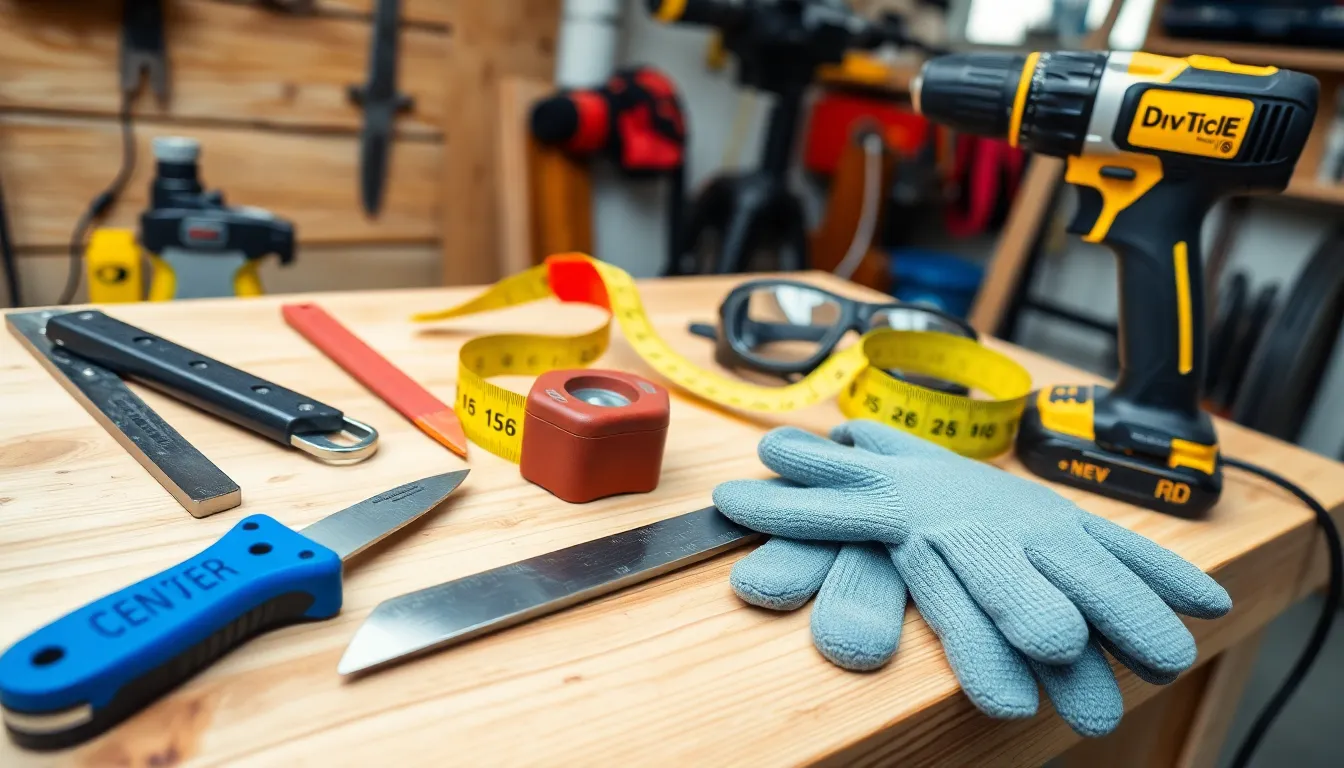Table of Contents
ToggleVinyl siding might seem like a superhero in the world of home exteriors, but even the mightiest can suffer a few battle scars. Whether it’s a rogue branch that decided to play tag or the relentless sun fading its once-vibrant color, vinyl siding needs a little TLC now and then. Luckily, repairing it doesn’t require a cape or a PhD—just a bit of know-how and maybe a cup of coffee.
Overview of Vinyl Siding Repair
Vinyl siding repair is essential to maintain a home’s aesthetic appeal and structural integrity. Understanding the importance of addressing issues quickly can prevent larger problems down the road.
Importance of Timely Repairs
Timely repairs protect against further damage. Ignoring cracks or dents can lead to moisture infiltration, which promotes mold growth and structural decay. Fixing small issues prevents costly replacements in the future. Addressing minor problems promptly enhances the home’s value and ensures energy efficiency. A proactive approach saves homeowners time and money, making it essential to act swiftly.
Common Issues with Vinyl Siding
Common issues include cracks, warping, and fading. Cracks often result from temperature fluctuations and can easily be identified. Warping occurs due to improper installation or exposure to heat, leading to uneven surfaces. Fading happens over time from sun exposure, resulting in a less attractive appearance. Additional concerns like loose panels and insect damage can also arise. Each problem requires attention to maintain vinyl siding’s durability and aesthetic appeal.
Tools and Materials Needed

Repairing vinyl siding requires certain tools and materials. Gathering these items beforehand streamlines the repair process, ensuring efficiency.
Essential Tools for Repair
Essential tools include a utility knife, which helps in cutting siding materials with precision. A flat pry bar enables easy removal of damaged panels. Measuring tape ensures accurate dimensions for replacements, while a chalk line provides straight guidelines for alignment. A cordless drill facilitates fastening new panels securely. Having a safety goggles set protects eyes from debris during repairs. It’s beneficial to keep a pair of gloves on hand for added hand protection when handling sharp edges.
Recommended Vinyl Siding Materials
Recommended materials consist of matching vinyl siding panels, which maintain the home’s aesthetic. Inspecting for color code accuracy is crucial to ensure seamless integration. A repair kit often includes caulk, which seals gaps effectively to prevent moisture intrusion. It’s important to select the right color and texture to blend with the existing siding. Fasteners should match the siding material and specifications for secure installation. Considering insulation options enhances energy efficiency, further contributing to a home’s overall durability.
Step-by-Step Guide to Vinyl Siding Repair
Repairing vinyl siding is manageable with the right approach. Follow these steps for effective results.
Assessing the Damage
Begin by thoroughly inspecting the siding for cracks, warping, or fading. Identifying specific problem areas helps determine the extent of the damage. Look for loose panels or any signs of moisture infiltration inside the home. Check closely for any signs of mold or mildew, as these indicate deeper issues. Noticing these details early stops bigger repairs down the line. Taking photographs of damaged sections serves as a useful reference when gathering materials.
Repairing Minor Damage
For small cracks, use a vinyl siding repair kit with color-matched caulk. Clean the damaged area with soap and water, then let it dry completely. Apply caulk using a caulking gun, filling the crack thoroughly. Smooth the caulk with a finger or a caulking tool for a seamless finish. Allow the caulk to cure according to the manufacturer’s instructions. For warped panels, carefully reheat the panel with a heat gun before straightening it. Press gently but firmly until the panel adjusts to its original shape.
Replacing Damaged Panels
When panels show severe damage, replacement may be necessary. Start by removing the damaged panel using a flat pry bar, taking care not to harm adjacent panels. Measure the section to ensure the new panel matches perfectly. Purchase a corresponding panel, ensuring it matches the existing siding color. Align the new panel with the surrounding panels, sliding it into place. Secure the panel with fasteners to keep it stable. Finally, inspect the seams for proper fitting and apply caulk where necessary to seal gaps.
DIY vs. Professional Repair Services
Vinyl siding repair offers homeowners choices between DIY and professional services. Each option has distinct benefits and drawbacks.
Pros and Cons of DIY Repairs
DIY repairs provide flexibility, allowing homeowners to work at their own pace. Cost savings represent a significant advantage since materials alone are often cheaper than hiring professionals. Additionally, a sense of satisfaction often comes from completing home repairs independently. However, knowledge limitations pose challenges. Without proper expertise, mistakes could lead to further damage. Safety risks arise during the repair process, especially when using tools like heat guns. Moreover, time investment can be substantial, particularly for those lacking experience.
When to Hire a Professional
Certain situations necessitate hiring a professional. Extensive damage, such as significant cracking or warping, often requires expertise for proper assessment. Professionals typically offer warranties on their work, providing added peace of mind. Complex repairs, especially for those requiring specialized tools or techniques, are best left to experts. Moreover, time constraints could make professional services more appealing. For homeowners lacking confidence in their skills, seeking assistance ensures quality results. Ultimately, each situation varies, making it essential to weigh the options carefully.
Timely vinyl siding repair is essential for maintaining a home’s charm and structural soundness. Homeowners can easily tackle minor issues with the right tools and knowledge. Addressing cracks and warping promptly prevents further complications that could lead to costly repairs down the line.
For those comfortable with DIY projects, the steps outlined can simplify the repair process. However, when faced with extensive damage or uncertainty, seeking professional help ensures a job well done. Ultimately, prioritizing vinyl siding maintenance not only boosts a home’s curb appeal but also enhances its overall value and energy efficiency.




